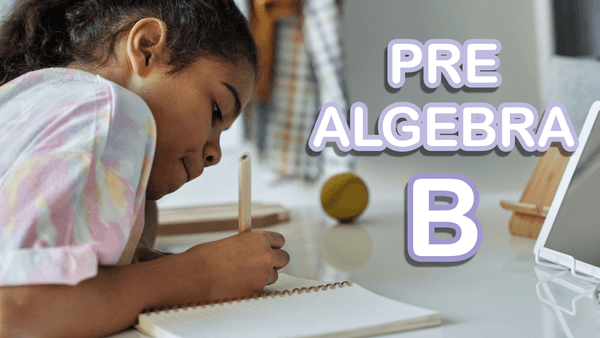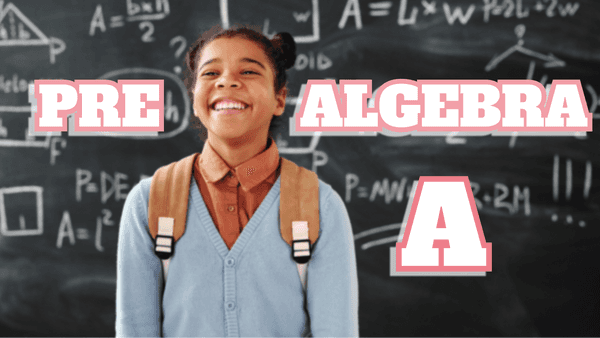- Private 1:1
- Format
- Age 10-13
- Learners
- Weekly
- Classes
- 50 minutes
- Per class

About this Course
Billing
Billed as
$275 / month
Scheduling
1:1 classes are 50 minutes long and can be scheduled anytime Monday-Sunday from 7am to 7pm PT. To begin, select Book your Placement Class to signup. Our team will then match you and set up your first class!
- Course duration4-6 months
- Lesson50 minutes
Learning Targets
Range, Median, Mode, and Mean
Datasets-1: I can find the minimum, maximum, and range of a dataset
Datasets-2: I can find the mode of a dataset
Datasets-3: I can find the median and quartiles of a dataset
Datasets-4: I can find the mean (average) of a dataset
Datasets-5: I can determine which statistic will best represent the data
Single Variable and Multivariable Grpahs
Graphs-1: I can read and draw a stem-and-leaf plot
Graphs-2: I can read and draw a histogram
Graphs-3: I can read and draw box-and-whiskers plots
Graphs-4: I can read and draw a bar chart
Graphs-5: I can read and draw a pie chart
Graphs-6: I can read and draw a line graph
Graphs-7: I can read and draw a scatter plot
Graphs-8: I can read and draw a table
Points, Lines, and Angles
PL&A-1: I can identify points, lines, line segments, and rays
PL&A-2: I can identify right angles
PL&A-3: I can categorize parallel and perpendicular lines
PL&A-4: I can categorize acute and obtuse angles
PL&A-5: I can calculate complementary, supplementary, and vertical angles to calculate angle measurements
Triangles
Triangles-1: I can apply the triangle inequality rule
Triangles-2: I can calculate angle measurements using the sum of angles
Triangles-3: I can apply the Pythagorean Theorem
Triangles-4: I can identify scalene, equilateral, and isosceles triangles
Triangles-5: I can identify acute, right, and obtuse triangles
Triangles-6: I can use triangle congruence rules to determine if two triangles are congruent
Triangles-7: I can use triangle similarity rules to determine if two triangles are similar
Triangles-8: I can find missing side lengths from similar triangles
Quadrilaterals, Perimeter, and Area
Polygons-1: I can identify different types of quadrilaterals
Polygons-2: I can classify equilateral shapes
Polygons-3: I can classify regular polygons
Polygons-4: I can calculate interior and exterior angles
Polygons-5: I can calculate the perimeter of a polygon
Polygons-6: I can calculate the area of a quadrilateral
Polygons-7: I can calculate the area of an irregular shape
Polygons-8: I can identify the four types of transformations
Circles
Circles-1: I can calculate the circumference of a circle from radius or diameter
Circles-2: I can calculate the area of a circle from radius or diameter
Circles-3: I can calculate the area of a sector
Three-Dimensional Shapes
3D-1: I can calculate the surface area of 3D shapes
3D-2: I can calculate the volume of 3D shapes
3D-3: I can find volume and surface area when given measurements in terms of variables
Multiples, Factors, and Divisibility
Numbers-1: I can find the factors/divisors of a number
Numbers-2: I can find the multiples of a number
Numbers-3: I can use divisibility rules to determine if a number is divisible by 2-11
Numbers-4: I can categorize a number as either prime or composite
Numbers-5: I can calculate the prime factorization of a number
Numbers-6: I can find GCF of two numbers
Numbers-7: I can find the LCM of two numbers
Counting and Probability
P&C-1: I can count the number of terms in a sequence
P&C-2: I can use a Venn diagram to count the number of items in overlapping groups
P&C-3: I can use the Fundamental Rule of Counting to count combinations
P&C-4: I can calculate the probability of a single independent event
P&C-5: I can use the Fundamental Rule of Counting to calculate the probability of multiple independent events
General Mathematical Skills
I can explain what the question is asking for.
I can explain my thinking behind my work.
I check my work carefully during or after I finish a question.
When I am stuck on a question, I show perseverance by trying a new method or asking for help.
When I am stuck on a question, I use what I know to find a place to start.
General Learning Habits
Joyful Collaboration
- I practice listening to my instructor and sharing my ideas to co-create understanding.
- I attempt tasks independently and ask my instructor questions when I need help.
Unlimited Curiosity
- I take ownership of my learning by asking meaningful questions both when I need clarification and when I want to know more about a topic.
Nimble Determination
- I practice resilience when I am frustrated that I have not yet achieved mastery of a new concept or skill; instead of complaining about challenges, I try new approaches and creative solutions.
Investment in Excellence
- I arrive to class on time and prepared to learn, with my computer set up with a strong internet connection.
- I complete my homework on time, and if I cannot complete my homework due to other obligations, I honestly communicate the reasons for late homework to my instructor.
- I do my best to stay present and on task for the whole session. I support my focus by putting away any distracting technology and setting notifications on my device to “do not disturb” mode.
Homework
Instructors will assign students roughly 60 minutes of class related problems at the end of each session. Homework is generally pulled from Juni's curriculum and is meant to complement the class experience and ensure the student continues to learn and grow outside of the session
Pre-Requisites
Completion or demonstrated understanding topics within Pre-Algebra A
Who are Juni’s Instructors?
Our instructors are subject matter experts from top US universities. Instructors are highly-vetted and background checked prior to joining and undergo extensive training before ever teaching on our platform.
Upon signing up, parents are asked a series of questions that allow us to match your child with an optimal instructor based on their unique needs and interests. Factors that are considered in our matching process include Learning Style, Personality, Personal Experience, and Academic & Career Aspiration.





